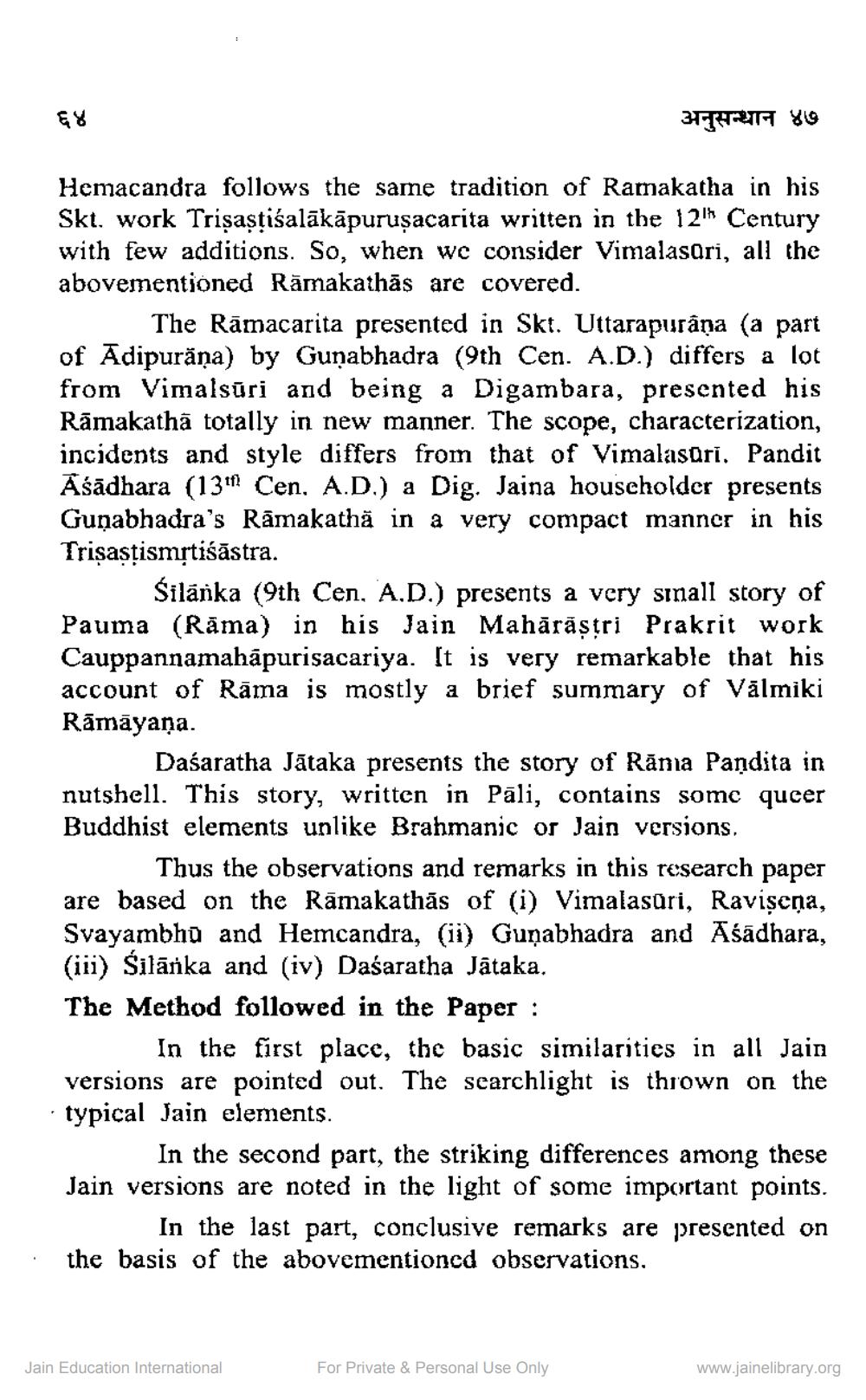Book Title: Jain Version of Ramayana Author(s): Nalini Joshi Publisher: ZZ_Anusandhan View full book textPage 2
________________ अनुसन्धान ४७ Hemacandra follows the same tradition of Ramakatha in his Skt. work Trişastiśalākāpuruşacarita written in the 1211 Century with few additions. So, when we consider Vimalasari, all the abovementioned Rāmakathās are covered. The Rāmacarita presented in Skt. Uttarapurāņa (a part of Adipuräna) by Gunabhadra (9th Cen. A.D.) differs a lot from Vimalsūri and being a Digambara, presented his Rāmakathā totally in new manner. The scope, characterization, incidents and style differs from that of Vimalasori. Pandit Āśādhara (1311 Cen, A.D.) a Dig. Jaina houscholder presents Guņabhadra's Rāmakathä in a very compact manner in his Trisasțismstiśāstra. Silānka (9th Cen, A.D.) presents a very sinall story of Pauma (Rāma) in his Jain Mahārāștri Prakrit work Cauppannamahāpurisacariya. It is very remarkable that his account of Rāma is mostly a brief summary of Vālmiki Rāmāyaṇa. Dasaratha Jātaka presents the story of Rāna Pandita in nutshell. This story, written in Pāli, contains some queer Buddhist elements unlike Brahmanic or Jain versions. Thus the observations and remarks in this research paper are based on the Rāmakathās of (i) Vimalasuri, Ravişcna, Svayambhū and Hemcandra, (ii) Gunabhadra and Aśādhara, (iii) Silārka and (iv) Dasaratha Jātaka. The Method followed in the Paper : In the first place, the basic similarities in all Jain versions are pointed out. The searchlight is thrown on the · typical Jain elements. In the second part, the striking differences among these Jain versions are noted in the light of some important points. In the last part, conclusive remarks are presented on the basis of the abovementioned observations. Jain Education International For Private & Personal Use Only www.jainelibrary.orgPage Navigation
1 2 3 4 5 6 7 8 9 10 11 12 13
